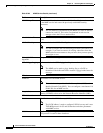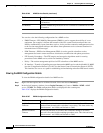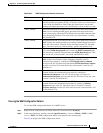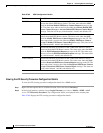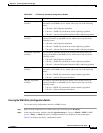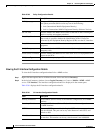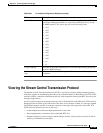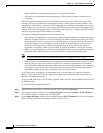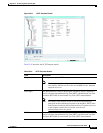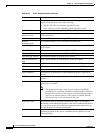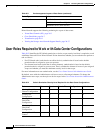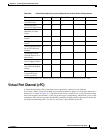
25-156
Cisco Prime Network 4.0 User Guide
OL-29343-01
Chapter 25 Monitoring Mobile Technologies
Viewing the Stream Control Transmission Protocol
• Optional bundling of multiple user messages into a single SCTP packet
• Network-level fault tolerance through supporting of multi-homing at either or both ends of an
association
The SCTP application submits data to be transmitted in messages to the SCTP transport layer. The
messages and control information is separated and placed in chunks (data and control chunks), each
identified by a chunk header. A message can be fragmented over a number of data chunks, but each data
chunk contains data from only one user message. SCTP bundles the chunks into SCTP packets, which
are then submitted to the Internet Protocol. The SCTP packet consists of a packet header, SCTP control
chuck (if required) and SCTP data chunks (if available).
The primary distinguishing features of this new protocol are:
• multi-homing—The ability of an association to support multiple IP addresses or interfaces at a given
endpoint. Currently, SCTP does not do load-sharing, but with the multi-homing facility, SCTP has
greater potential to survive a session in case of network failures. Using more than one address allows
re-routing of packets in event of failure and also provides an alternate path for retransmissions.
Endpoints can exchange lists of addresses during initiation of the association. One address is
designated as the primary address to receive data. A single port number is used across the entire
address list at an endpoint for a specific session. Heartbeat chunks are used to monitor availability
of alternate paths with thresholds set to determine failure of alternate and primary paths.
Note An “association here refers to the connection between two endpoints in this context.
• multi-streaming—Each stream represents a sequence of messages within a single association. These
messages may be long or short, which include flags for control of segmentation and reassembly.
Stream Identifiers and Stream Sequence numbers are included in the data packet to allow sequencing
of messages on a per-stream basis. This ensures that unnecessary head-of-line blocking between
independent streams of messages is avoided in case of loss in one stream.
SCTP also provides a mechanism for designating order-of-arrival delivery as opposed to ordered
delivery. The design of SCTP includes appropriate congestion avoidance behavior and resistance to
flooding and masquerade attacks.
In case of ASR 5000 devices, SCTP carries signalling traffic that flows through IPSec tunnel over LTE
S1-MME interface.
To view the SCTP configuration details:
Step 1 Right-click the required device in Prime Network Vision and choose Inventory.
Step 2 In the logical inventory window, choose Logical Inventory > Context > Profile > SCTP Template. A
list of SCTP templates is displayed in the content pane.
Step 3 In the Logical Inventory window, select a template from the SCTP Template node. The SCTP template
details are displayed in the content pane as shown in Figure 25-21.



